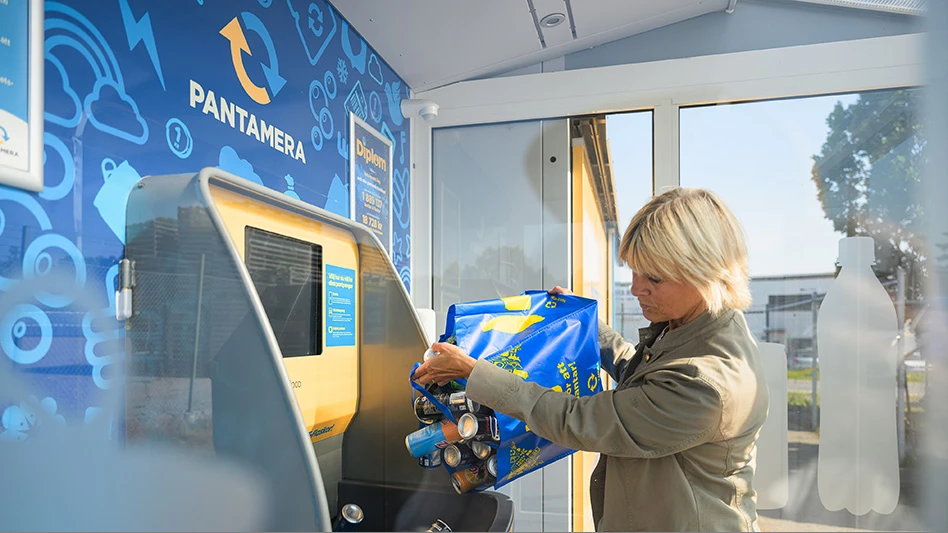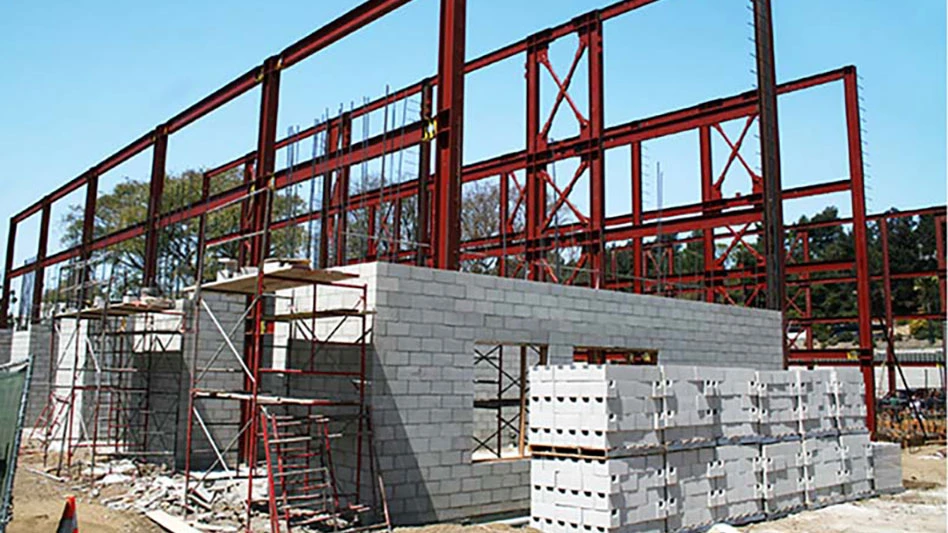Conditions that lead to mold can affect buildings and structures as well as whatever is contained within them.
In the case of records storage centers, that means the same conditions that cause structural wood and walls to grow mold or rot can also affect storage boxes and the documents within them.
To be fully on the lookout for conditions that can encourage mold to invade, records center managers should be fully aware of why and how mold fungi form and spread.
FUNGUS AMONG US
The Kingdom of Fungi is neither plant nor animal but instead a group specialized spore-producing, single- or multi-cellular organisms found virtually anywhere on the planet.
Fungi are responsible for important ecological processes such as biodeterioration. Together with bacteria in soils, fungi degrade plant and animal debris into simple chemical components that can be reused by nature. In fact without fungi the world would be a much messier place. These extremely prolific organisms are also known to make up approximately 25 percent of the world’s biomass.
| Causing Problems |
|
The filamentous micro fungi otherwise known to the layperson as mold have been the cause of millions of dollars of personal and commercial property loss. Why is mold such a problem to buildings and occupants? Contrary to some of the general populations' awareness, mold spores are present almost everywhere, and all buildings, whether typical or atypical, have airborne and surface concentrations of spores or fungal fragments. It is impractical to completely eliminate the presence of mold spores in buildings. Spores are introduced by outside air, human and animal traffic and many other means. It is the actively growing mold that is of concern. Today, because of heightened awareness, education and scientific study, it is a well-accepted argument that abnormally high concentrations of airborne mold spores, fragments and actively growing indoor mold amplification sites are problematic to the occupants and to certain building materials. Unfortunately, in light of some misinformation or sensationalism that has been disseminated to the general public by the media and other sources, an unhealthy fear of mold has developed. Labels like "black" or "toxic" are now continuously associated with indoor mold. Regardless, the studied effects on humans are allergic reactions, asthma, toxic reactions and infections, the most common being allergic reactions and asthma. The more severe human reactions to mold are much less common, and are mostly attributable to extreme cases that involve heavy exposure. Throughout the past several years, the medical community has begun the tedious task of determining the actual scientifically supportable health effects of mold on building occupants. The list of potentially harmful contaminants that molds produce include mycotoxins, glucans and microbial volatile organic compounds (MVOC). In the case of allergic reactions, spores and mold fragments can produce allergic reactions in sensitized individuals. Glucans are present in the cell wall structure of fungi and some bacteria. Exposure to glucans has been studied and is considered to be one of the causes of building related symptoms (BRS)s. Although recently most of the emphasis has been placed on health effects via the route of inhalation, historically, other routes such as ingestion and dermal contact have been documented in several extreme cases. All molds, depending the sensitivity of the receptors (i.e., occupants) and the concentration of the particular contaminant (e.g., spore, glucan, mycotoxin and MVOC) have the potential to produce adverse health effects and responses in humans. Certain molds produce allergens that can trigger allergic reactions and asthma attacks in people sensitized to mold. Other molds are known to produce potent toxins and even to cause infections. The MVOCs mentioned earlier are responsible for the musty odor that certain molds emit. These odors can also have an effect on indoor air quality and can develop into a considerable nuisance. The potential for adverse health effects in occupants are critical reasons to prevent indoor mold growth. However, it is an understatement to suggest that the scientific community has a long way to go before any comprehensive and conclusive studies are complete. Researchers face the problem of determining how much is dangerous or deleterious to humans. In other words, how many spores per cubic meter or parts per million of glucans or MVOCs are harmful or create an indoor air quality problem? Differences in human sensitivities create an even more difficult task in quantifying contamination. Not everyone is allergic, not everyone is asthmatic, and not everyone is sensitized to the same airborne levels of the various species of molds. The old saying, “You can’t manage what you can’t measure,” holds true in this situation. Currently researchers and health scientists are incorporating a common sense approach to quantification until more exact levels are determined. In most cases industrial hygienists and indoor air quality specialists measure background levels outdoors and compare the results to the indoor air to determine if the environment is typical for normal human occupancy. Although this is not an exact science, it has been useful for specialists to determine the presence if hidden molds or undetected amplification sites. This method is also used quite often for post-remediation clearance testing. |
Although fungal cells resemble cells of higher plants, fungi differ from plants in that they are unable to perform photosynthesis. Instead, fungi survive by secreting enzymes that degrade organic substrates into soluble nutrients that are readily absorbed. Fungi reproduce by making spores that are invisible to the human eye without magnification (sizes ranging from 2 - 20 microns).
Most spores can remain suspended in air for a long time until they settle on surfaces. When spores settle on sufficiently moist organic materials, they germinate and a colony is formed. As fungi germinate and grow, they form branching filaments called "hyphae," which combine to form the majority of the visible mass.
As fungi continue to grow, the hyphae develop into what is called a mycelial mass. Several mycelial masses have a fuzzy appearance when viewed by the naked eye. As the fungal mass matures, reproductive bodies called conidiophores that resemble stalks develop from the hyphae and produce conidia, also known as spores.
THE ROLE OF MOISTURE
Basically, the equation for mold growth is very simple: Mold spores, plus sufficient moisture, plus sufficient nutrients equal active growth. It should be noted that temperature is an additional factor in the equation but because most indoor environments are kept at temperatures that are very conducive to active mold growth it will not be discussed. However, it is safe to say that if the temperature range is between 40 and 100 degrees Fahrenheit, mold can actively grow and remain viable.
The problems occur when mold spores come in contact with building materials (e.g., sheetrock, wallpaper, carpet, ceiling tile, etc.) that have sufficient moisture content to support active fungal growth. If the moisture content in substrates is in the proper range for a sufficient period of time, a mold problem can develop quite rapidly. Once growth begins, it amplifies quickly, releasing potentially millions of spores into the air and degrading organic building materials and other carbon-based sources.
Mold spores are almost always present in outdoor and indoor air, building materials are manufactured with products that are rich with nutrients, and indoor temperatures must remain at a comfortable level for human occupancy. Therefore, moisture is the best factor to manipulate for eliminating or controlling mold growth.
Several buildings and homes develop mold growth from a single water intrusion from a leaking roof, window or pipe. The water loss could be an acute catastrophic event or just a slow chronic problem that goes undetected for a considerable length of time.
Mold can grow undetected inside of a wall cavity, behind vinyl wallpaper and anywhere the moisture level and nutrient availability are sufficient. It is critical that a building is dried immediately and sufficiently after a water intrusion. Several facilities have mold amplification sites that resulted from improper water mitigation practices.
Either the water in the building was not mitigated in a timely manner (the EPA recommends within 24 to 48 hours) or the building materials were not dried sufficiently, and moisture remained in the substrates. A qualified contractor should be contacted immediately after a water loss is discovered. Selection of qualified contractors is crucial. They should be experienced and have the resources to properly dry and dehumidify the entire building.
Building managers should be proactive and educate the appropriate maintenance personnel in the detection and mitigation of water losses. Several losses, if detected early enough, can be handled in house and may not require the services of an outside contractor.
Another very common reason that mold develops in a home or building is because of poor stewardship. Some buildings are basically neglected and the building staff rarely employs proactive maintenance practices. The heating, ventilation and air conditioning (HVAC) system can be the cause or the cure when it comes to indoor mold growth. Improperly maintained, the HVAC can become the mold amplification site in light of condensation and buildup of debris.
Excessive moisture-generating activities can contribute to the problem and raise indoor relative humidity above 70 percent, which is ideal for mold growth. Even when exterior water sources are minimized, moisture in the indoor air can build up from poorly vented combustion appliances, showers, cooking, laundry, etc.
| Building Inspection |
|
Construction defects have been the cause of several mold claims. These defects could result from inferior siding, roofing materials, windows and improper installation and construction practices. Commonly in these cases the damage is usually substantial because the mold is so widespread by the time it is detected. Several buildings and homes have suffered mold infestation as a result of inferior exterior siding. Several of the construction defects cases have cost millions of dollars to remediate the mold and rebuild the structural and cosmetic damage. Usually tied up in subrogation, these cases tend to take a considerable amount of time to complete. |
Damp, unventilated basements are perfect breeding grounds for opportunistic mold spores because there is usually excess moisture, sufficient food supply and continuously stagnant air.
The following are various successful strategies that can aid in the control of inside humidity and moisture:
• Ventilation – Air movement does not allow for air to stagnate and minimizes the potential for migration of interior humidity into the wall cavities, a great location for hidden mold growth.
• Dilution of Humid Indoor Air – The exchange of interior moisture laden air with dry air.
• Source Control – For indoor air, fix water leaks and reduce moisture from activities
• Dehumidification – Dehumidification removes moisture from a space. Refrigerant or desiccant dehumidification should be used if the building space requires rapid dehumidification.
The author is director of microbial remediation and health & safety for BMS Catastrophe, Fort Worth, Texas. He can be contacted at ccook@bmscat.com.

Explore the October 2006 Issue
Check out more from this issue and find your next story to read.
Latest from Recycling Today
- CP Group announces new senior vice president
- APR publishes Design Guide in French
- AmSty recorded first sales of PolyRenew Styrene in 2024
- PRE says EU’s plastic recycling industry at a breaking point
- Call2Recycle Canada, Staples Professional expand partnership
- Circular Services breaks ground on north Texas MRF
- Tariff uncertainty results in choppy nonferrous scrap flows
- CATL, Ellen MacArthur Foundation establish battery partnership






